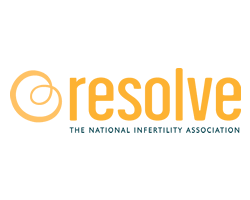Whenever you decide to transfer multiple embryos to a surrogate, you obviously risk having a multiple pregnancies. But you also improve the chances that at least one embryo will make it to term. How do you know the ideal number of embryos to transfer to ensure you end up with a healthy baby at the end of your journey?
There are many factors to consider in multiple transfers
When IVF was a new technology, common wisdom called for placing as many embryos as possible to ensure at least one live birth. The side effect of this practice is that sometimes women became pregnant with three babies or more, which is problematic for many reasons.
 Multiples are more likely to be born prematurely. This can lead to infants being born on the edge of viability risking severe birth defects from lung issues to cerebral palsy to blindness and physical and intellectual delays. The chances of such children dying soon after birth are substantial.
Multiples are more likely to be born prematurely. This can lead to infants being born on the edge of viability risking severe birth defects from lung issues to cerebral palsy to blindness and physical and intellectual delays. The chances of such children dying soon after birth are substantial.
This can take a significant toll on parents, both emotionally and financially. Medical bills for multiples can be astronomical, even if the children are relatively healthy. Chances are only one parent will be able to work in a family with multiples and they may need to call on friends and family for additional hands.
Limiting the number of embryos placed is best for everyone involved. The intended parents, the surrogate, and their reproductive endocrinologist should discuss how many embryos should be placed. How many babies is the surrogate willing to carry to term? How many children can the intended parents support? How do the intended parents and the surrogate feel about selective reduction? It’s a topic that must be discussed.
All parties must keep in mind that in a multiple pregnancy, even just twins or triplets, the chance of complications goes up significantly. At the very least, it’s likely that the surrogate will be placed on bed rest during her pregnancy which can have a major financial impact on both the surrogate and the intended parents.
Medical professionals have grown much more conservative regarding the number of embryos to be placed in a surrogate. That factor, combined with improved technologies, has improved the chances of achieving a pregnancy with fewer embryos placed.
If you’d like to learn more about gestational surrogacy or need advice on any of the factors and decisions involved in a surrogate pregnancy, contact the professionals at Surrogate Solutions.
Keep Reading!
Related articles to explore:
- Embryo Grading and Gestational Surrogacy: What You Need to Know
- IVF Cycling: Advice for Gestational Carriers
- Transfer Day! Should Intended Parents Attend?
We help Intended Parents Create Happy Families via Egg Donation & Surrogacy with the help of caring Egg Donors & Surrogates.
Why use an agency, Surrogate Requirements, Can I be a Surrogate?, Facts about Surrogacy, Information on surrogacy, What our agency can offer you , Surrogacy FAQs, Families who need you, Learn more, Apply now.






